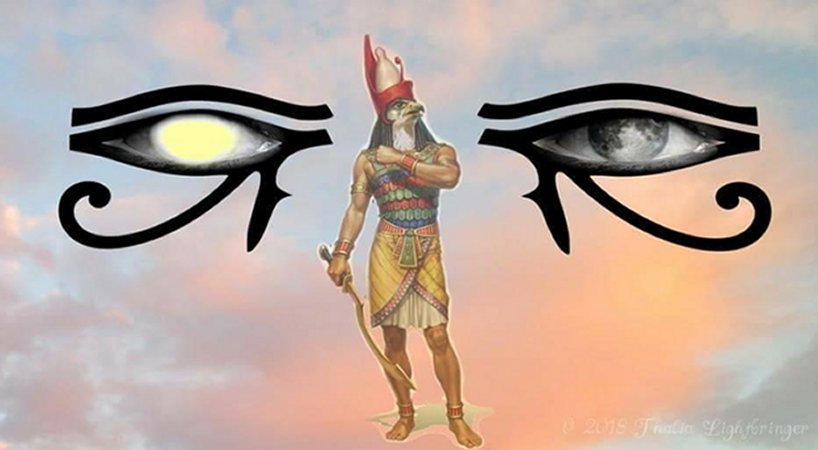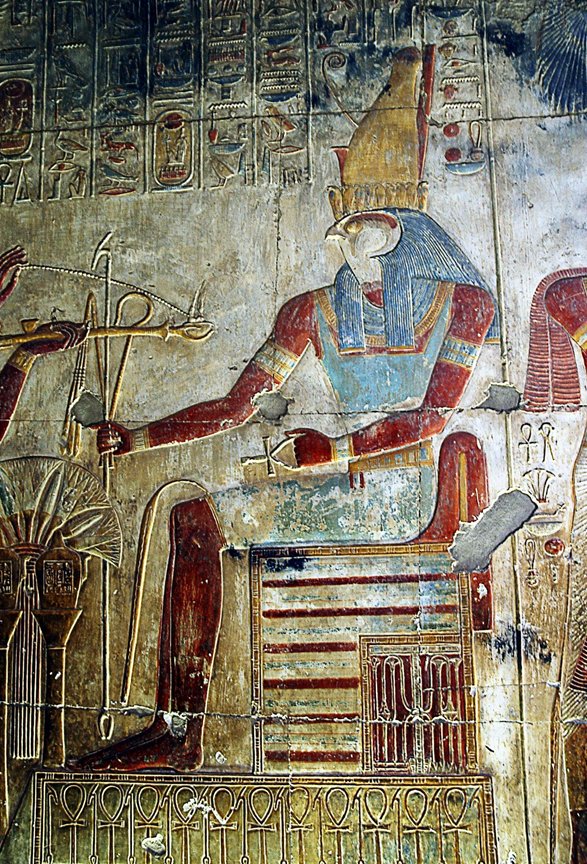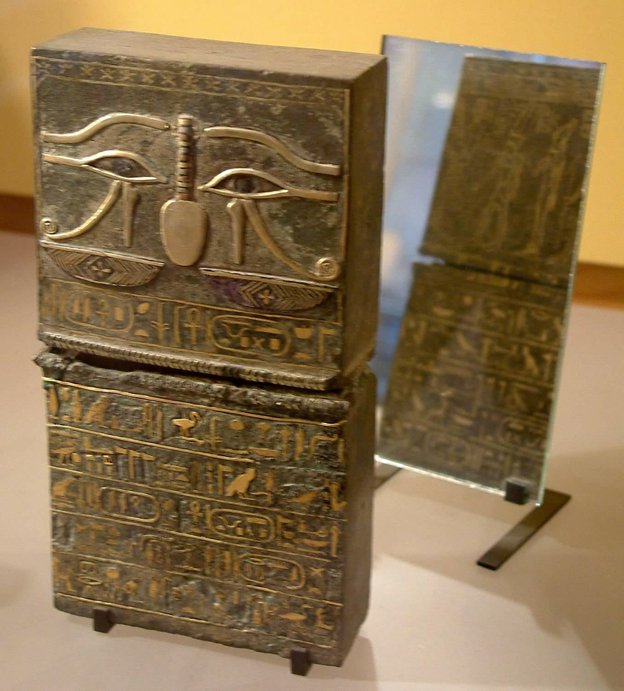Horus – One Of The Most Important Ancient Egyptian Gods And Symbol Of Rulership and Justice
Thalia Lightbringer - AncientPages.com - Horus was worshipped in different forms throughout Egypt from the predynastic period before Egypt was united under one ruler until Roman times. The pharaohs of Egypt took a Horus name to symbolize that they were the living embodiment of this god.
Credit: Thalia Lightbringer/AncientPages.com
The myths associated with Horus are sometimes confusing. Some disagree on his origin and associations. However, these confusions can be understood in the context of the times if you delve into the history of Egypt.
What Did Horus Represent?
Horus was the champion of the Egyptian pantheon. He was the soaring falcon Khemwer, the great black one, also called the son of truth. Like a white knight (except in this case white is black), he stood for justice and upheld proper harmony and order, Ma'at. Khemet, the black land, was what the Ancient Egyptians called their home, and Horus protected it from the ruler of the Red Land, the Deshret (desert), ruled by Set (or Seth).
Horus was the god of the sky and protector of kingship. He is usually depicted as a falcon or a man with the head of a falcon. The hieroglyphic bird sign (Har, Her, Heru, Hor) for Horus is said to mean "the distant one" or “the one on high” but is sometimes interpreted as "hawk." However, due to the markings under the eye of the lanner falcon, which are similar to the Eye of Horus, it is likely that this falcon is most closely associated with Horus in ancient times. Many authorities also suggest the peregrine falcon.
Horus In The Earliest Times
Falcon gods were worshipped throughout Egypt from predynastic times. Before the Two Lands of Egypt were united by Narmer, Horus was worshipped as a patron god at Nekhen (Greek Hierakonpolis, translated as "Hawk City," maybe the source of the hawk vs. falcon confusion). This was the capital of Upper Egypt in prehistoric and early dynastic times and remained important as a religious center even during the Greek occupation. Predynastic Kings of Upper Egypt were called "Followers of Horus."
Horus eventually absorbed many of the functions of the different falcon gods, becoming known by different names depending on which function he was serving in that instance. He was Harmakhis (Har-em-akhet, “Horus in the Horizon” i.e. the setting sun) and Harakhte or Ra-Horakhty (Hor-akheti, “Horus of the horizons” i.e. from rising to setting) when associated with the sun god Re (Ra). This form was popular with later dynasties after Re gained prominence. After the Fifth Dynasty, the pharaoh was said to be the living embodiment of the sun god Re instead of Horus.
At Kom Ombo, Horus was worshipped as Haroeris (Harwer, or Her-ur “Horus the Elder” or "Horus the Great"). Horus the Elder appears to be one of the oldest forms of this god, a creator god of light and lord of the sky. In this form, he is said to be the husband of Hathor (“House of Horus”), goddess of love. This came from the times when the primordial eight (Ogdoad) of Hermopolis were worshipped, then replaced by the nine (Great Ennead) of Heliopolis. Geb (Earth) and Nut (Sky) were among these nine, along with their children Horus, Isis, Osiris, Set, and Nephthys.
The Elder Who Grew Younger
Another name for Horus used in later times is Harsiesis (Har-si-Ese, “Horus, Son of Isis”). It is unclear as to how Horus could have been the brother of Isis and then born as her child. Perhaps because Egyptians thought that the spirit of Horus inhabited the body of the pharaoh while living, then moved to whoever took the throne, this was not confusing to them. The ancient Egyptians also believed that the spirit of a god could inhabit an animal born with special markings associated with the god.
Relief of Horus in the temple of Seti I in Abydos, by Rhys Davenport from the United Kingdom - Horus - Temple of Seti I, CC BY 2.
From around 2350 BC, stories became popular about Horus the son of Isis and Osiris, sometimes said to have been magically conceived after the death of Osiris with the aid of Thoth. After Horus became the son of Isis, he is often depicted as a child being nursed by Isis or sucking his finger and is called Har-pe-khrad, or Heru-pa-khered, “Horus the Child or the Younger” (Harpokrates in Greek, or Harpocrates, Roman spelling). This form of Horus was particularly popular with the Greeks. He was identified with Herakles because he was shown strangling or trampling on snakes or other dangerous creatures.
Horus At War
Though mostly seen as a deity with a protective and healing function, Horus was also identified by the Greeks with Ares, their god of war. Horus taking on this function could be related to warring factions of Horus and Set devotees (indicated by the 2nd Dynasty pharaoh Sekhemhib or Seth Peribsen taking a Set Name instead of a Horus Name and the last ruler of that dynasty, Khasekhemwy, using both). In many stories, Horus became the enemy of Set after the death of Osiris and was given dominion over Egypt's fertile lands, while Set was associated with the desert and foreign lands.
Another title given to Horus was Hor Merti "Horus of the two eyes." The Eye of Horus was a powerful symbol of protection and healing that was often worn as an amulet. Though many refer to both the right and left eye symbols as the Eye of Horus, Wedjet, or Udjat ("Whole" or "Complete"), the Eye of Horus is specifically the left eye, which was said to be the moon.
The left eye of Horus was injured in a fight with Set, who lost a testicle. Stories say Horus had Thoth heal his eye or that Khonsu the moon god gave part of himself to replace the eye. This was used as an explanation of the waning and waxing of the moon, so apparently, the healing had to be renewed periodically. Set, however, never got his testicle back, explaining the barrenness of the desert he ruled.
Wooden case decorated with bronze, silver, ivory, and gold, by inconnu - Guillaume Blanchard, July 2004, Fujifilm S6900, CC BY-SA 3.0
The right eye was said to be the sun, and when depicted as a symbol, it refers to the Eye of Ra, which was protective as well, but in a destructive, vengeful fashion. These eyes were also identified with goddesses. In one odd myth, Ra sends his eye to take vengeance for him. When she returns, his eye has grown back, so he places her on his forehead as the uraeus serpent.
There is much more that could be said about Horus, many stories, and other names and forms. However, the aim of this article was to give an introduction to this popular figure and show how he changed over time, due to political changes in Egypt. Still, throughout all changes, Horus remained a protector of the living and keeper of order, an interesting and many-faceted figure who was respected from the beginning of the Egyptian civilization through Roman times.
Written by – Thalia Lightbringer – AncientPages.com Staff Writer
Copyright © AncientPages.com All rights reserved. This material may not be published, broadcast, rewritten or redistributed in whole or part without the express written permission of AncientPages.com
Expand for referencesReferences:
Handbook of Egyptian Mythology, by Geraldine Pinch, 2002, ABC-CLIO, Inc., Santa Barbara, CA
Egyptian Mythology A to Z (Third Edition), by Pat Remler, 2010, Chelsea House, New York, NY
A Handbook of Egyptian Religion, by Adolf Erman, Translated by A. S. Griffith, 1907, Archibald Constable & Co. Ltd., London
More From Ancient Pages
-
 Viking Grave And Sword Discovered In Norwegian Garden
Archaeology | Jul 3, 2023
Viking Grave And Sword Discovered In Norwegian Garden
Archaeology | Jul 3, 2023 -
 Mysterious Bones May Re-Write History Of North America – Humans Were Present On The Continent 10 Times Earlier
Archaeology | May 8, 2017
Mysterious Bones May Re-Write History Of North America – Humans Were Present On The Continent 10 Times Earlier
Archaeology | May 8, 2017 -
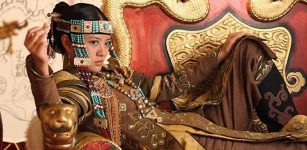 Khutulun – Great Female Warrior Of The Mongol Empire And Cousin Of Kublai Khan
Featured Stories | Jul 25, 2018
Khutulun – Great Female Warrior Of The Mongol Empire And Cousin Of Kublai Khan
Featured Stories | Jul 25, 2018 -
 Viking Women Were More Prominent Than Previously Thought – Archaeological Discoveries Reveal
Archaeology | Sep 6, 2019
Viking Women Were More Prominent Than Previously Thought – Archaeological Discoveries Reveal
Archaeology | Sep 6, 2019 -
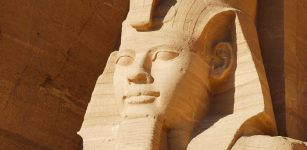 How Ramesses II Became The Greatest Pharaoh In Egypt
Featured Stories | Jun 6, 2021
How Ramesses II Became The Greatest Pharaoh In Egypt
Featured Stories | Jun 6, 2021 -
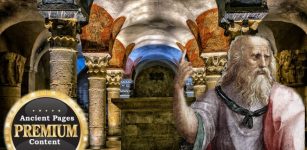 Riddle Of An Ancient Underground City No-One Thinks Exist – Have We Misunderstood Plato? Part 1
Featured Stories | Sep 16, 2019
Riddle Of An Ancient Underground City No-One Thinks Exist – Have We Misunderstood Plato? Part 1
Featured Stories | Sep 16, 2019 -
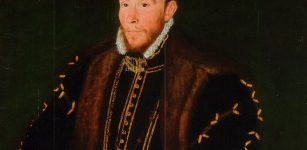 On This Day In History: ‘Earl of Northumberland’ Thomas Percy Executed Because He Was Catholic – On August 22, 1572
News | Aug 22, 2016
On This Day In History: ‘Earl of Northumberland’ Thomas Percy Executed Because He Was Catholic – On August 22, 1572
News | Aug 22, 2016 -
 Discovered – Large Mysterious Structure Hidden Under The Sand In The Sahara Desert – A New Pyramid Or Something Else?
Archaeology | Nov 13, 2019
Discovered – Large Mysterious Structure Hidden Under The Sand In The Sahara Desert – A New Pyramid Or Something Else?
Archaeology | Nov 13, 2019 -
 Ants May Hold the Clues Why The Human Brain Decreased In Size 3,000 Years Ago – Scientists Say
Archaeology | Oct 22, 2021
Ants May Hold the Clues Why The Human Brain Decreased In Size 3,000 Years Ago – Scientists Say
Archaeology | Oct 22, 2021 -
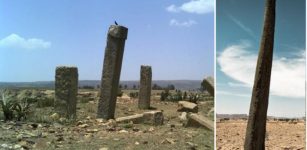 1,000-Year-Old Church Walls Unearthed In Ethiopia By Polish Archaeologists
Archaeology | Apr 26, 2020
1,000-Year-Old Church Walls Unearthed In Ethiopia By Polish Archaeologists
Archaeology | Apr 26, 2020 -
 Wreckage From Famous Warships Explored In 3D On Anniversary Of Sinking
Archaeology | Nov 22, 2022
Wreckage From Famous Warships Explored In 3D On Anniversary Of Sinking
Archaeology | Nov 22, 2022 -
 The Magnificent Yule Goat In Gävle, Sweden Has Finally Arrived
Ancient Traditions And Customs | Dec 1, 2020
The Magnificent Yule Goat In Gävle, Sweden Has Finally Arrived
Ancient Traditions And Customs | Dec 1, 2020 -
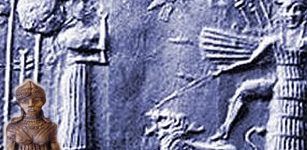 Ereshkigal – Ruler Of The Sumerian Underworld And Most Feared Deity In Mesopotamian Pantheon
Featured Stories | Mar 16, 2017
Ereshkigal – Ruler Of The Sumerian Underworld And Most Feared Deity In Mesopotamian Pantheon
Featured Stories | Mar 16, 2017 -
 Long-Lost Island Documented On Ancient Maps – Erased From History Or Misidentified?
Featured Stories | Dec 14, 2019
Long-Lost Island Documented On Ancient Maps – Erased From History Or Misidentified?
Featured Stories | Dec 14, 2019 -
 Mount Ararat Was Once Located By The Sea – Study Of Palm Leaves Reveals
Archaeology | Jul 18, 2020
Mount Ararat Was Once Located By The Sea – Study Of Palm Leaves Reveals
Archaeology | Jul 18, 2020 -
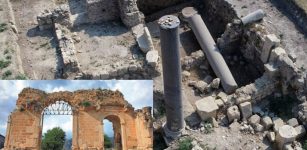 Rare Gladiator Tombs Found In Ancient City Of Anavarza In Southern Turkey
Archaeology | Aug 16, 2022
Rare Gladiator Tombs Found In Ancient City Of Anavarza In Southern Turkey
Archaeology | Aug 16, 2022 -
 Pandavleni Caves: Skillfully Carved Rocky Realms Decorated With Sculptures And Inscriptions In Brahmi Script
Featured Stories | Aug 1, 2016
Pandavleni Caves: Skillfully Carved Rocky Realms Decorated With Sculptures And Inscriptions In Brahmi Script
Featured Stories | Aug 1, 2016 -
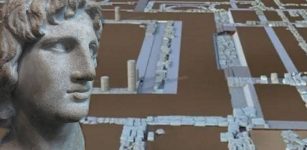 Visit The Palace Where Alexander The Great Was Born In Pella
Archaeology | Oct 21, 2020
Visit The Palace Where Alexander The Great Was Born In Pella
Archaeology | Oct 21, 2020 -
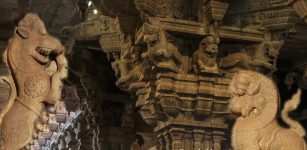 Yali – Divine Protector And Guardian Of Temples Warding Off Evil Forces In Hindu Mythology
Featured Stories | Nov 7, 2020
Yali – Divine Protector And Guardian Of Temples Warding Off Evil Forces In Hindu Mythology
Featured Stories | Nov 7, 2020 -
 Gigantic Neolithic Newgrange Monument: A Temple, Astronomical Observatory Or Ancient Tomb?
Civilizations | Aug 14, 2016
Gigantic Neolithic Newgrange Monument: A Temple, Astronomical Observatory Or Ancient Tomb?
Civilizations | Aug 14, 2016

